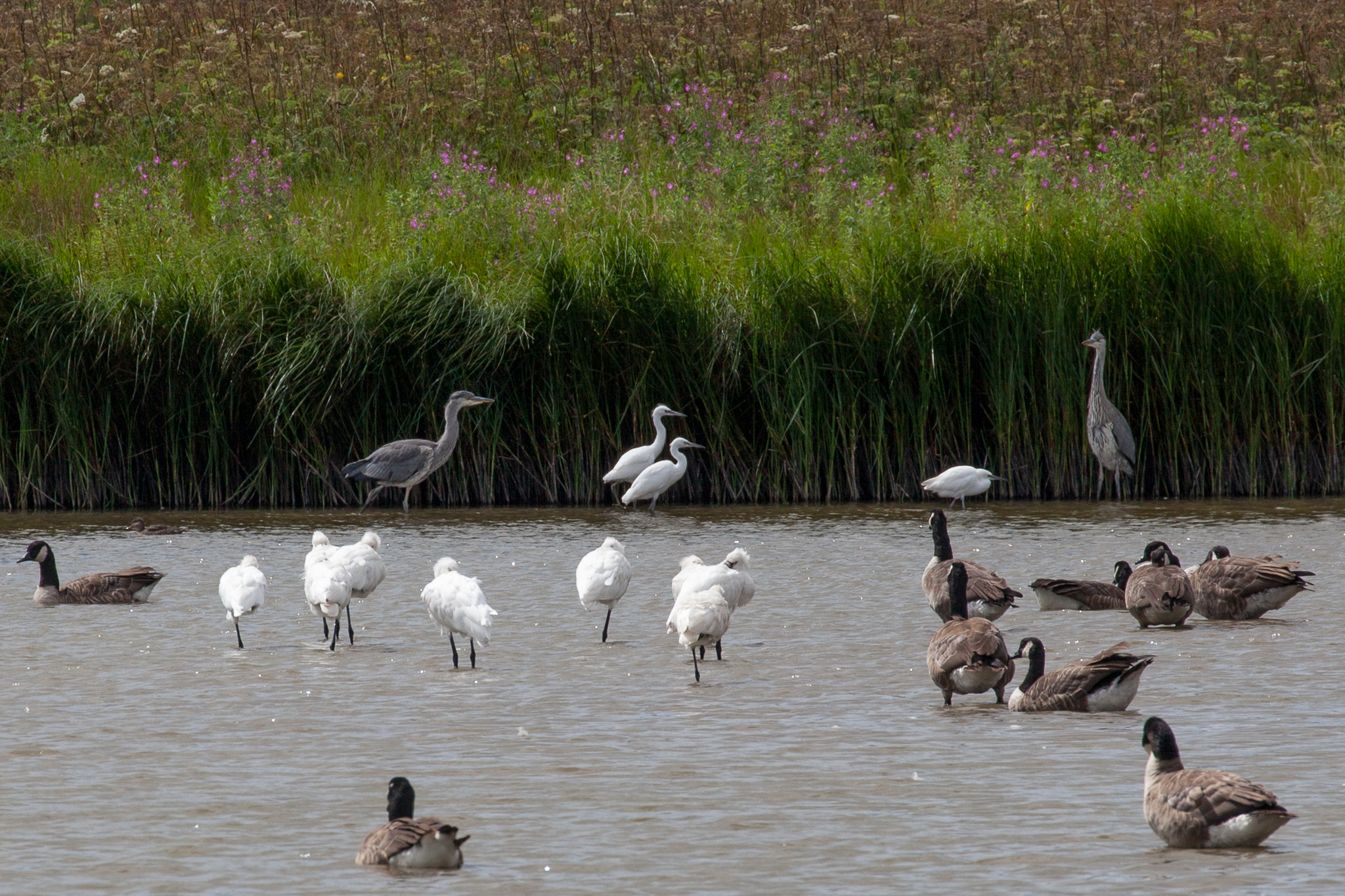It’s always nice to see a species of bird you’ve never seen before: a life-lister, as it’s referred to by those who keep such lists. This week, I went in search of nine spoonbills at the RSPB reserve at Burton Mere. I’d read about them on Colin Davies’s Birds and Bryophytes blog. They turned out to be remarkably easy to find:

…Well, I say easy, but I was staring right at the spoonbills for at least a minute before I realised what they were.
In my defence, they did have their backs to me, so I couldn’t see their eponymous spoon-shaped bills, which would have been a total give-away. At first, I assumed they were little egrets, which are remarkably common on the reserve these days. But then it dawned on me that they were a tad too big for little egrets. Indeed, it was their size that threw me: the spoonbills were far, far bigger than I’d imagined. I’d expected them to be about the size curlews; they were more like the nearby Canada geese in size, if not in bulk.
I’ve made this sort of mistake before. The first time I saw dippers as a boy, I was astonished at how small they were. I still am. Having pored over my Observer’s Book of Birds, trying to learn as many species as possible, I’d assumed that a dipper would be about the size of a moorhen, rather than somewhat smaller than a blackbird. And, from the pictures in other books, I’d always assumed that weasels and stoats were about the same size. They’re not even close. A weasel is like an elongated mouse; a stoat is similar in size to a squirrel. Yes, maybe if I’d troubled to read the descriptions that accompanied the pictures in my books, I wouldn’t have been quite so surprised. But who wants to read text when they can look at pretty pictures? And besides, saying a dipper is ‘nearly 7 inches’ in length didn’t mean an awful lot to a primary school kid who was just being introduced to the newfangled centimetre.
Despite having pored over bird books throughout my childhood and adolescence, I still struggle to identify species in the field—and especially in the marsh. Certain waders remain particularly problematical, and ducks totally do my head in. But, at the age of 51, I continue to learn. I’ll never mistake a spoonbill for a little egret again—nor a marsh harrier for a buzzard. To me, struggling to identify a species, before actually identifying it, is by far the best way to learn.
Leave a Reply